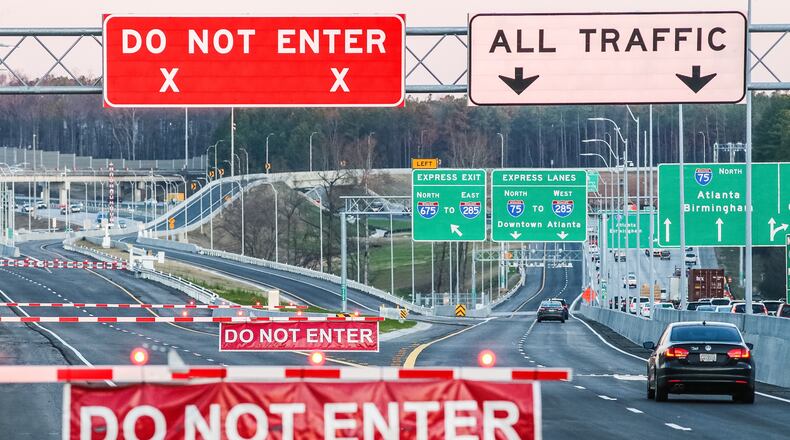The I-75 South Metro Express Lanes in Henry County have not passed the naked eye test to most passersby. How could they? We often see from the WSB Jam Cams in our Traffic Center or from the Skycopter above the same thing commuters see: very few travelers in the volume-driven toll lanes between I-675 and McDonough. But as the State Road and Tollway Authority celebrates a new downtown office and a customer service center that combines SRTA’s and Georgia Regional Transportation Authority’s services, they have something else for which to clink glasses.
Since the lanes opened to much aplomb at the end of January (after two years of road work), the lanes have seen 500,000 trips.
“That’s a significant milestone for us where that is, versus where we were forecasting it to be,” SRTA and GRTA Executive Director Chris Tomlinson says. “Our initial projections for average daily trips - that’s Monday through Friday - was approximately 6,000 trips per weekday. Today we’re seeing about 25 percent more than that or about 7,600 trips.”
Being ahead of pace is a likely surprise to Henry County commuters and it includes trips made by HERO units, a factor not entered into the forecast. But Tomlinson says those HERO trips are mere drops in the bucket, as the number of statewide Peach Passes is over 600,000 and Florida and North Carolina toll pass holders can also use the lanes. Lane usage has not grown enough to cause the toll to exceed $.50 for an entire trip, but Tomlinson expects numbers to steadily grow.
“It is not uncommon for volumes to grow for the first 12 or even the first 24 months. And actually, almost year over year, we’ve seen increases on I-85.”
The I-85 HOT lanes in Gwinnett opened in the fall of 2011 and also looked like a ghost town in their first few weeks. As people got used to them, they soon filled-in and prices for full trips continue to increase. Tomlinson notes a big difference between those lanes, which replaced existing lanes, and those on I-75.
“When we opened I-75, we took three general purpose lanes and added two additional lanes, so that’s a 66 percent increase in capacity. That’s a lot of capacity, so that’s why you don’t see that level of congestion.” Tomlinson points out that I-85 is six lanes each way and more people use it in general.
And SRTA data shows that the I-75 lanes have helped at least slightly ease the pain on the Stockbridge side of the lanes.
“All those vehicles that have switched over have made a benefit on the general purpose lanes,” Tomlinson explains. “That bottleneck that used to occur on I-75 at I-675, that still occurs. But our data shows that it occurs for a shorter period of time.”
One big flaw in the reversible lanes is that they can only help one side at a time, so if both sides of I-75 are jammed up in PM drive on a travel Friday, for example, only southbound travelers can benefit. And the lanes take two hours to clear and reverse, so they can’t be responsive to wrecks and other traffic interruptions.
Tomlinson says SRTA will be watching volume in the fall when school resumes and for opportune times during summer road work. A $.50 trip in those lanes could shave a bunch of time off of a trip to Florida or home to McDonough.
“We’ve received some anecdotal calls like that, from people seeing cars go by in the Express Lanes and saying, ‘That made me get it, because I want to have the choice next time to bypass some of that,’ ” Tomlinson says.
Criticizing the expensive, delay-heavy project as a failure is easy, especially since it involves adding tolls. Using this filter (which I have had trouble finding on Snapchat), the conclusion is easy. But then apply the filter of facts from SRTA and possibly the narrative changes some. And then remember that success is measured over a much larger sample than six months.
About the Author

